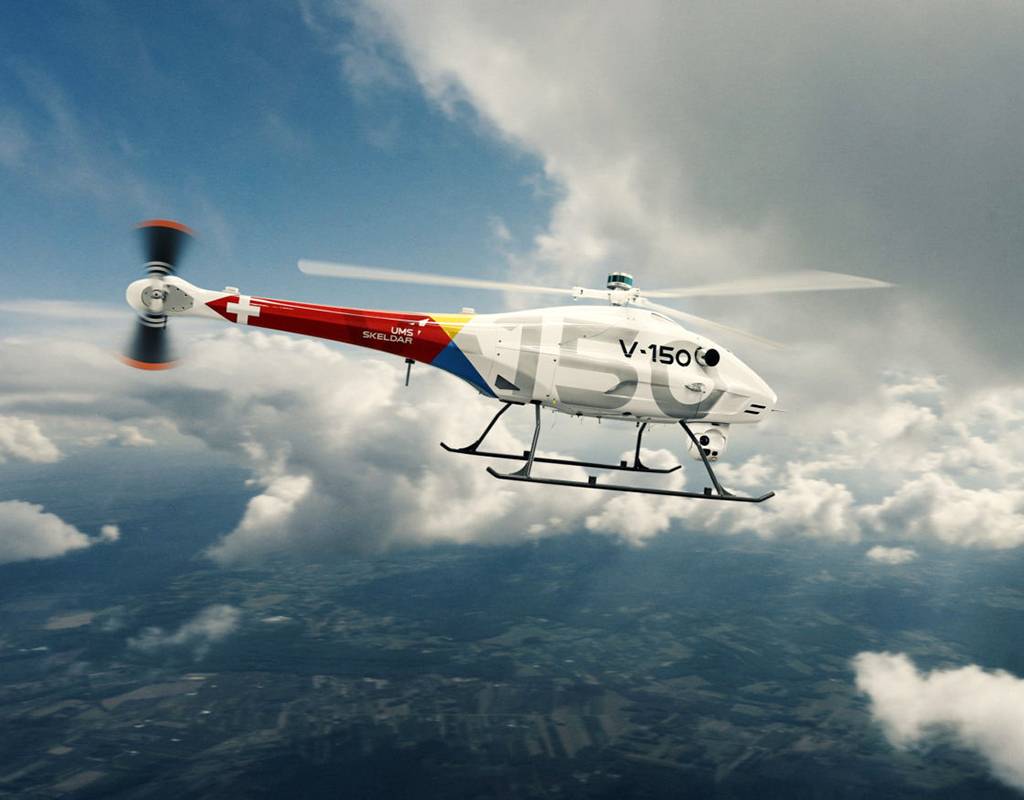
UMS Skeldar sees particular potential in the oil-and-gas market for its new V-150 unmanned aerial vehicle (UAV), with the system’s small size and relatively low cost likely to appeal to customers in the domain.
The company – a joint venture between UMS Aero Group and Saab – announced the V-150 in early March, with the new system pitched as a smaller and cheaper version of its existing V-200 UAV. The UAV can carry a maximum payload of 30 kilograms in its main bay and 12 kilograms in the nose. Its planned endurance of up to four hours is lower than the V-200, but sufficient for a wide range of missions in the energy market and other commercial spaces, said David Willems, UMS Skeldar’s vice president – business development and strategy.
Willems said the V-150’s small footprint could be suited to a number of civilian missions. The system is being targeted at applications in harsh environments, notably the energy domain, he said. However, he also pointed to a number of other potential markets outside of defense and security, including emergency responders and cargo delivery. The company has had talks with a number of potential customers, said Willems, though he declined to provide further details at this stage.
Reduced operating cost
The new UAV will be less expensive to acquire and maintain than the V-200, Willems said, with operating costs of almost half those of the bigger platform. This has been achieved through using more commercial off-the-shelf components, he said, which can be easily replaced, unlike bespoke components that can take a long time to procure and tend to be more expensive. Maintenance costs have also been reduced through the use of preventive maintenance techniques.
“After every cycle, every so many hours, you’re going to have a very known set of maintenance actions to perform on the platform,” Willems said, adding that much of this has been driven by Saab’s experience. “We’ve certainly improved what we knew before and applied all that knowledge to the V-150 to make it a rather easy to maintain platform.”

Willems told Vertical that the V-150 features “health-assessment software”, which monitors multiple parameters during the UAV’s operations. When combined with experience gained from its other platforms, this “enables us to predict what the maintenance will be like and the actions required.”
Looking to the future, Willems said he does not expect to see an efficient battery-powered vertical takeoff and landing platform in the V-150’s weight category in the near term.
“The technology is not ready yet,” he said, though he added that he expects to see more use of hybrid engine propulsion technology.
Willems said he anticipates greater autonomy for UAVs like the V-150 in the coming years, with AI playing a far greater role in analyzing scenarios, taking imagery and performing other actions without the need for human input. This will also enable more collaborative missions between different platforms, something that has been a growing focus for a number of organizations, including UMS Skeldar.
“We could see in the near future two or more platforms flying together and communicating with each other to perform a specific set of tasks – that is not so far off.”
Advertisement


